For those with a heavily shaded backyard or balcony, you may feel like your flower choices are limited. Flowers require adequate sunlight to develop and grow, right? Here you can choose the best shadow flowers for your balcony.
Contrary to popular belief, not all flowers need bright and direct sunlight to grow. There is a surprisingly high number of shade-tolerant flowers that work to provide a splash of color to a shadow or shaded area, making them ideal for small gardens, courtyards surrounded by other buildings, or even balconies.
Whether you’re looking to expand your knowledge of ideal conditions for different flower species, or if you want to enhance your shaded outdoor space with a bit of color, here is our guide to shadow flowers!
1. Foxgloves (Digitalis)
Digitalis, also simply known as foxgloves, is a genus of about 20 perennials. The most well-known species is the common foxglove, which is typically grown as an ornamental plant thanks to its tall upright structure and tube-shaped pink, purple, or even white flowers.
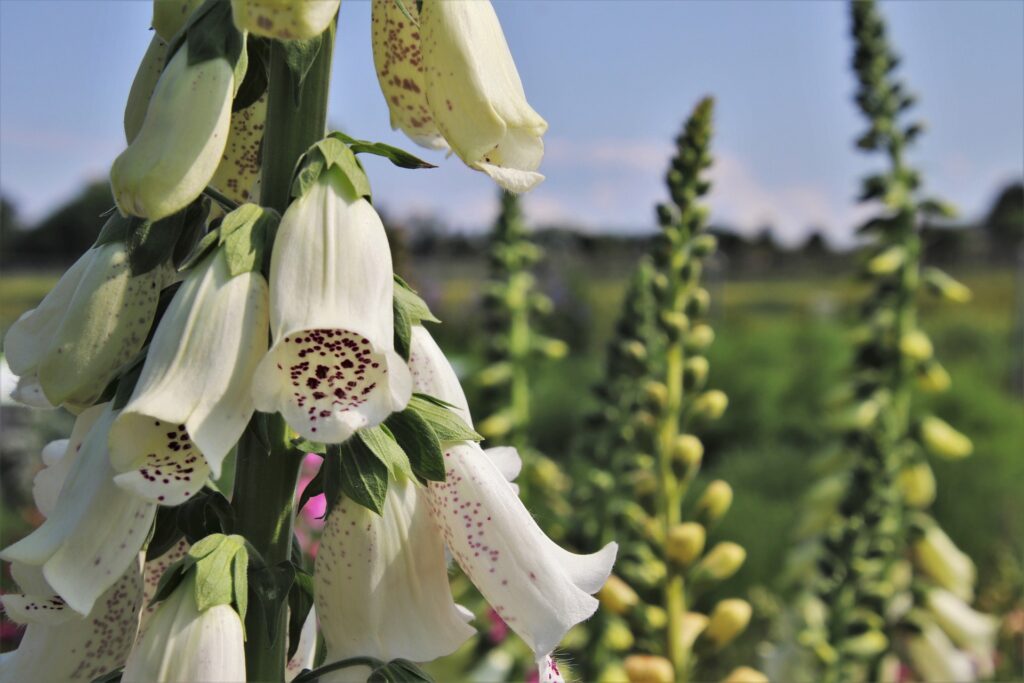
Foxgloves are naturally found growing in woodland, heathland, moorland, and even in towns. As a result of their varied habitat, foxgloves love to grow in the shade.
2. Violets (Viola)
Found across the globe, violets are known for their low maintenance and ability to happily grow without much human interaction. Also known as wild violets, these flowers produce blooms of heart-shaped lavender-blue flowers, typically with a white or yellow center.
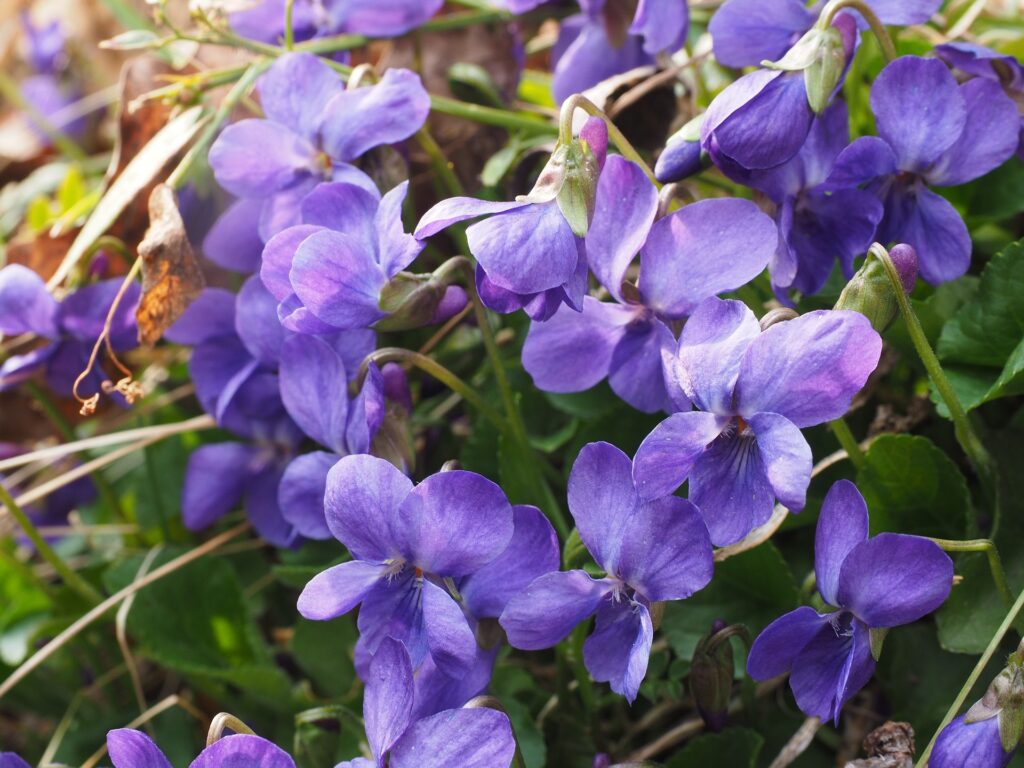
RELATED: 65 Stunning Purple Flowers of Different Types (Including Pictures)
Violets grow well in any condition, including both light and shaded areas, making them ideal for growing in any garden. As they generally prefer moist and well-draining soil, violets grow well underneath trees or around a water source.
3. Bellflowers (Campanula)
Campanula, also known simply as bellflowers, is a genus of flowering plants known for their distinctive bell-shaped flowers. While each species exhibits flowers of varying colors and shapes, the most common is the lavender-blue variation, wherein the flowers have an open cup shape.
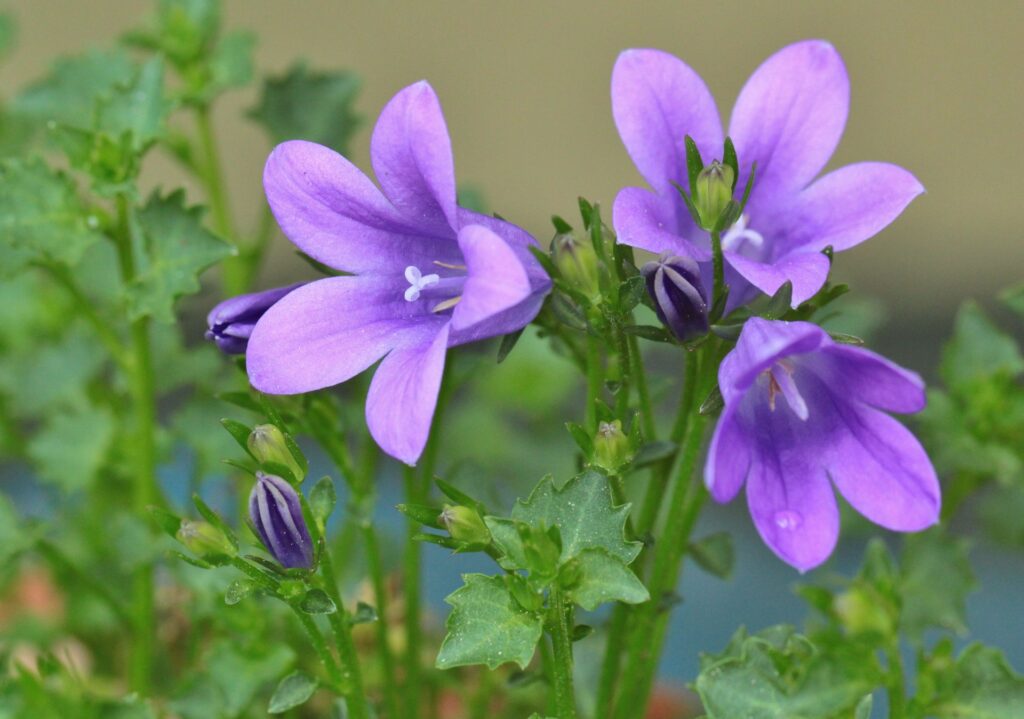
Interestingly, bellflowers typically prefer to grow in the sunlight, but they are known for being surprisingly shade tolerant. So, if you plant them in an area that receives a shadow, they will grow just fine!
4. Pansies
Pansies are a hybridized plant most commonly grown in gardens. While they are biennial plants, pansies are undoubtedly one of the best ways to brighten a shaded garden. As part of the viola family, pansies also exhibit distinctive heart-shaped petals and delicate structures, though they come in a variety of colors.
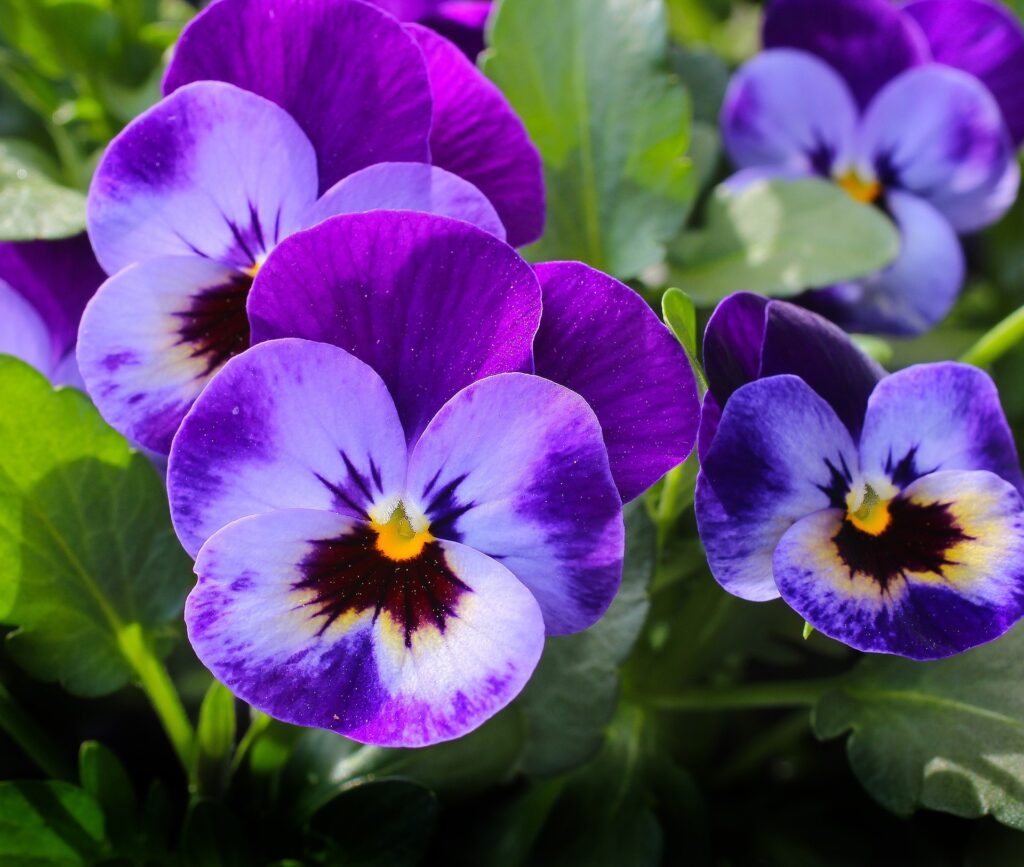
Aside from their beauty, the other reason why pansies are so popular amongst gardeners is for their low-maintenance care requirements. They will happily grow in shade as long as their soil is moist and they receive frequent deadheading.
5. Lily Of The Valley (Convallaria Majalis)
Lily of the valley flowers are most commonly found growing naturally in woodlands, but they also make for a beautiful addition to a shaded area in a garden underneath a tree or shrubbery. These small flowers produce blooms of tiny white flowers that are sweetly scented and appear like bells or perfect circles before opening.
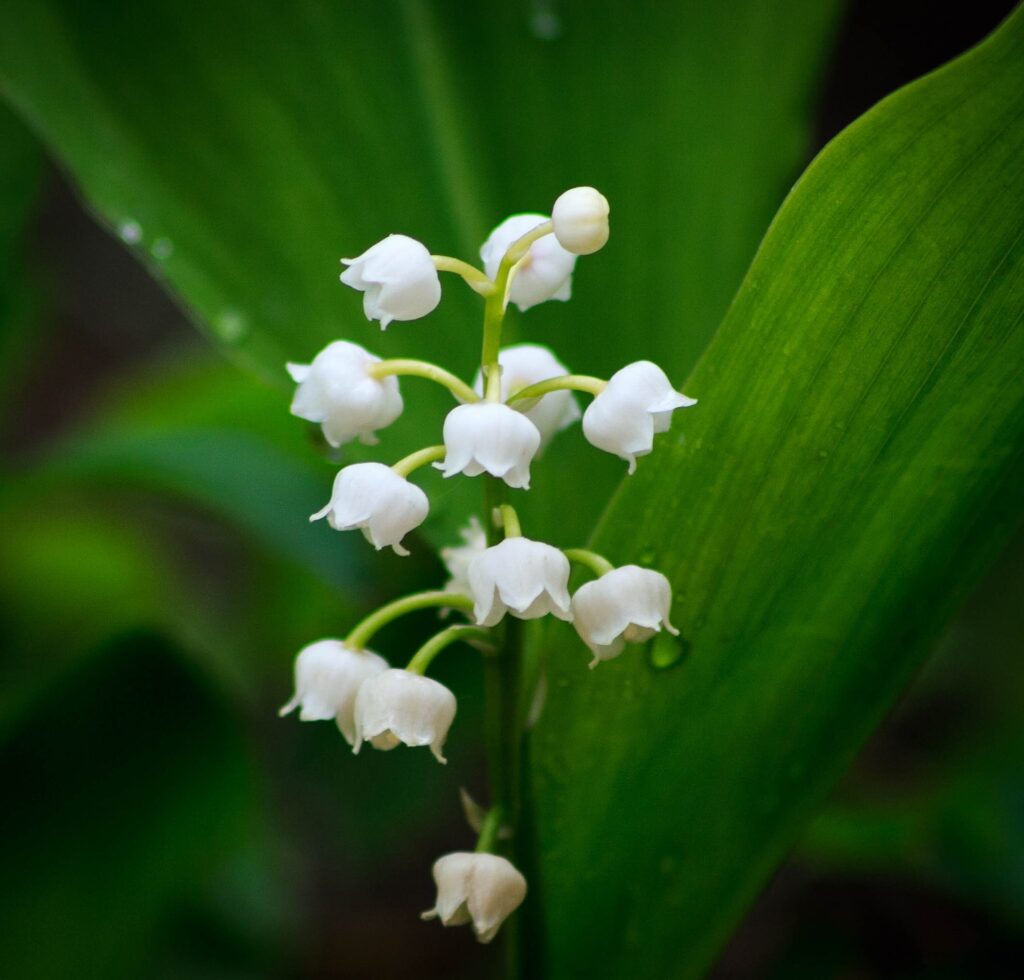
The lily of the valley grows well in partial shade and typically prefers warm summers.
6. Forget-me-nots (Myosotis)
Forget-me-not flowers are a great way to provide a burst of color. Providing small five-petaled blue flowers with yellow and white centers, they perfectly match the sun of a clear day – even when grown in the shade. In the wild, they are found blooming next to small bodies of water, such as a stream or pond.
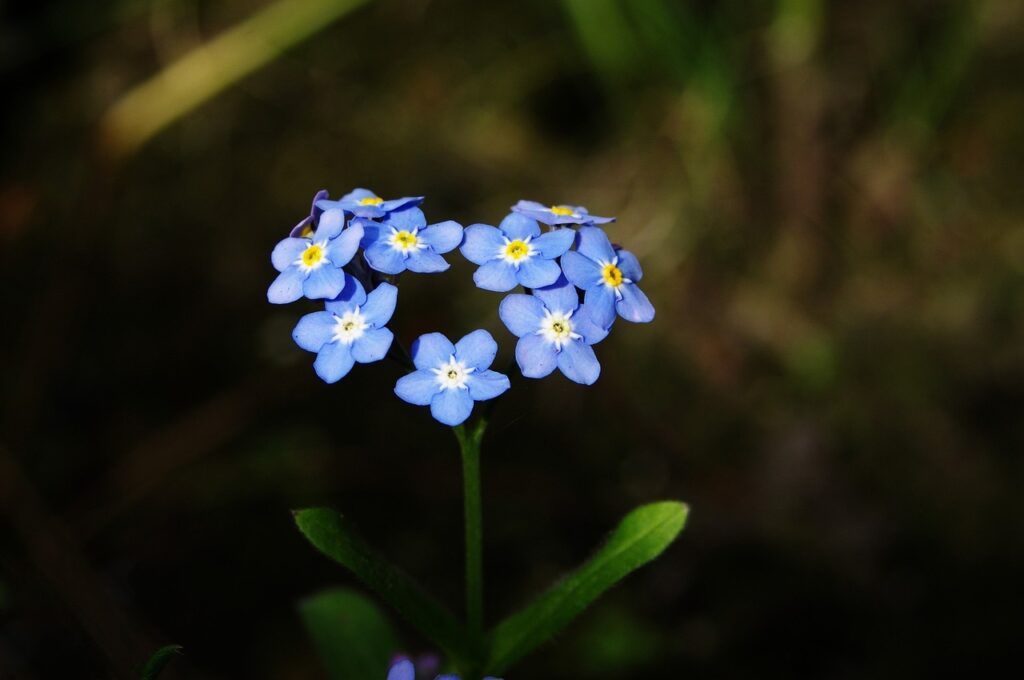
As they grow best in shaded woodland areas, it’s important to replicate this environment as well as possible in a garden. Don’t forget, forget-me-nots like shade and moist soil!
7. Hydrangea
A genus of over 75 species, hydrangea is a popular garden flowering shrub that is famously grown for its large, snowball-like clusters of flowers. The flowers themselves range in color, including pink, purple, blue, and white. Not only are they beautiful, but hydrangeas are notoriously easy to care for and work brilliantly to fill the empty space in a flower bed.
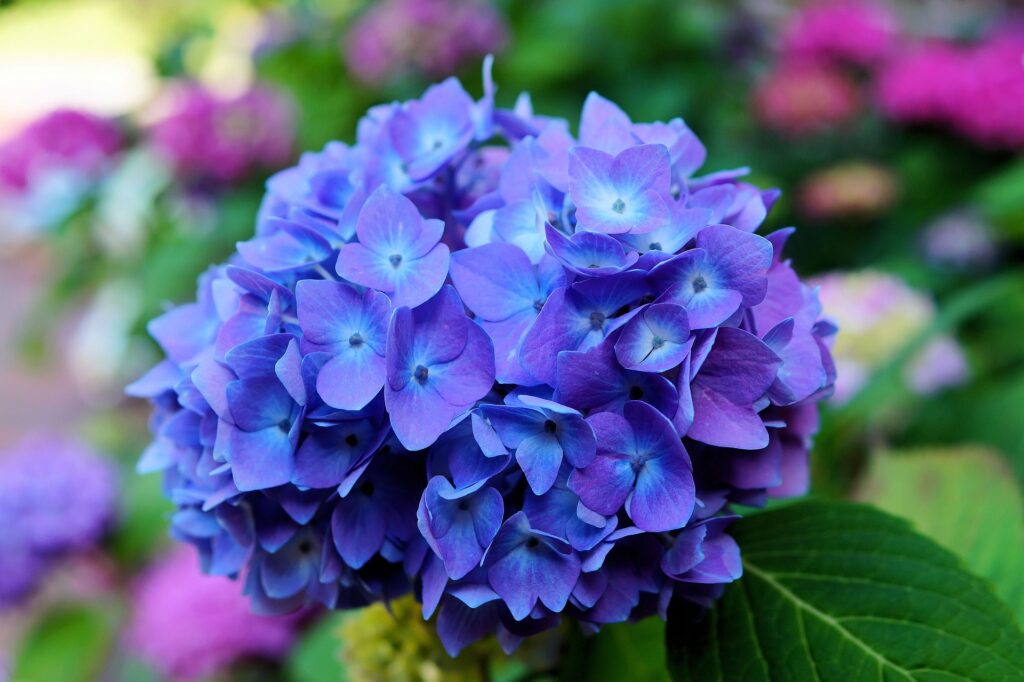
Most species in the hydrangea genus can be grown in both full sun and partial shade, making them ideal for gardens that receive shade in the afternoon or evening.
8. Begonia
Begonia is a large genus of approximately 2,000 flowering plants native to subtropical and tropical environments. Most of these species are annual flowers that grow very quickly, which is ideal for filling in those pesky blank spaces in a garden.
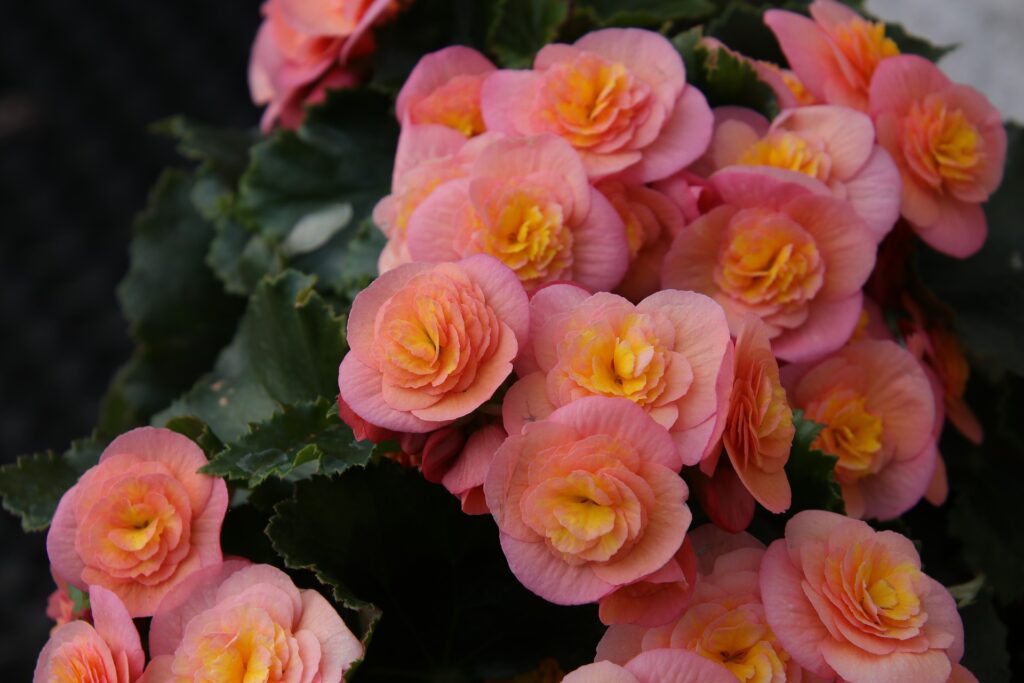
While they may prefer tropical and subtropical environments, constant exposure to full sun can actually cause begonias a lot of stress. This is why they grow best in gardens when the afternoon or evening sun is shaded to prevent them from burning or developing diseases.
9. Monkey Flower (Mimulus)
Monkey flowers are known for their flowers that resemble the face of a monkey, with some species looking distinctly more like monkeys than others. These charming flowers thrive in moist and wet soils, which is why they grow best near a water source or at the edge of a flower bed.

Each monkey flower species exhibits varying colors and patterns on the petals, with most species blooming from spring through to fall, making for a long-lasting splash of color to a shaded area.
10. Lobelia
A genus of over 400 flowering plants, lobelia flowers are mostly annual (though some are biennial) and known for their low-maintenance care requirements. Lobelia flowers grow best in cooler conditions and will bloom almost immediately in summer through to the first frost.

Most lobelia species are compact and will bloom flowers in a variety of colors, including purple-blue, violet, red, pink, and white. While they typically prefer full sun, they are tolerant of partial shade and will grow in virtually any conditions.
11. Snapdragons (Antirrhinum)
Also known as dragon flowers, snapdragon is a genus of flowering plants that are typically grown as a border flower. They earned their name from the shape of the flowers, which look like a dragon opening and closing its mouth when squeezed at the sides.
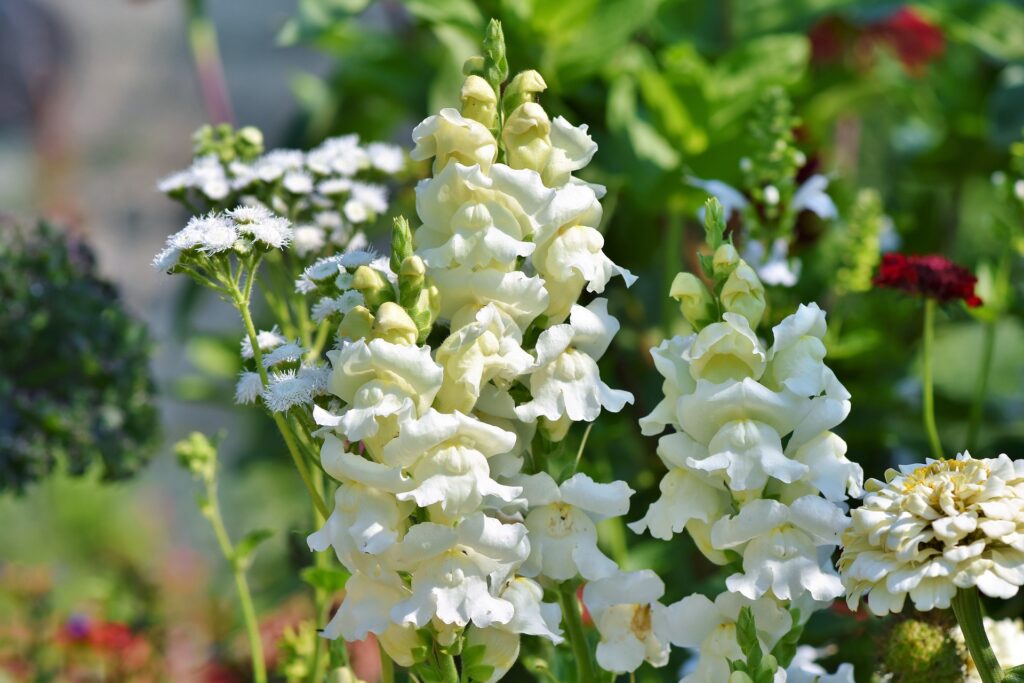
Snapdragons generally prefer full sunlight, though they are shade tolerant as some species will struggle to maintain their upright structure in the warmth of summer. Partial shade means they don’t need extra support to stand upright.
12. Bee Balm (Monarda)
Monarda, also known as bee balm, is a North American-endemic genus of flowers that are known for attracting pollinators like butterflies, birds, and – you guessed it – bees. These species produce open daisy-like flowers consisting of small tube-shaped petals that are typically purple, pink, red, or white.

Bee balm flowers typically prefer full sun, but these perennials are tolerant of partial shade. This is especially true in the heat of summer, wherein constant exposure to hot sun can be damaging to the flowers.
13. Primroses (Primula Vulgaris)
The common primrose is a beloved favorite amongst most gardeners. Known for their charming and delicate bloom, primroses grow in early spring to provide a splash of pretty color to your garden as it awakens from winter.
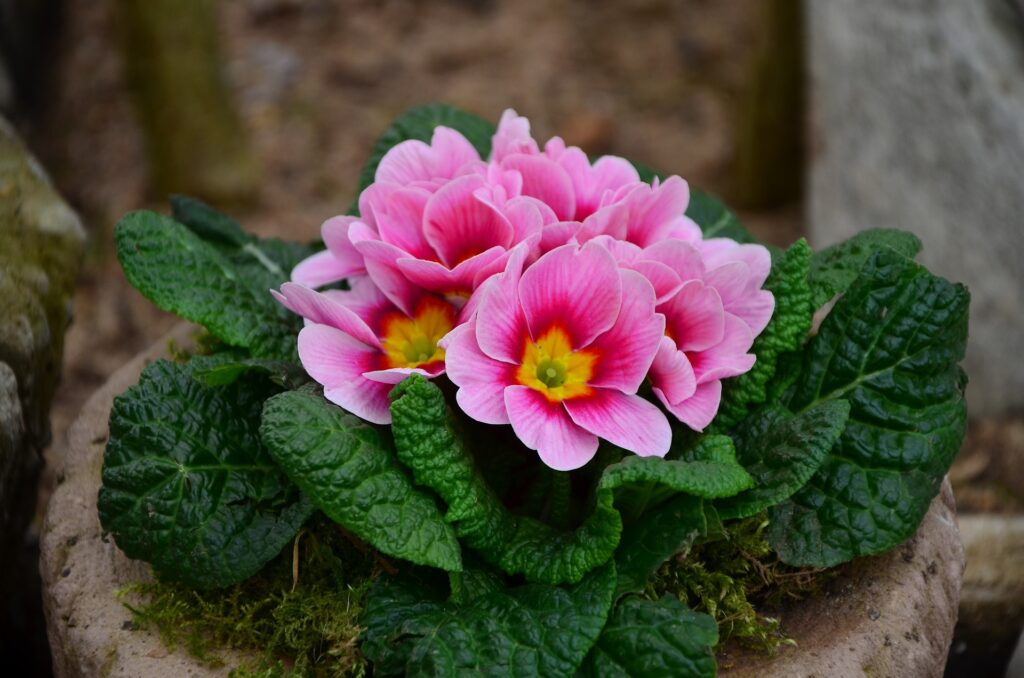
As primroses bloom so early in the year, they are remarkably hardy plants that will grow and adapt in a range of environments, including shaded areas. They typically favor moist and woodland-like environments.
14. Baby Blue Eyes (Nemophila Menziesii)
Baby blue eyes is a western North American annual herb that produces delicate and small soft blue or white flowers. Despite their small size, baby blue eyes herbs work to attract pollinators – especially in shaded areas where the blue of the flowers stands out in the darkness.
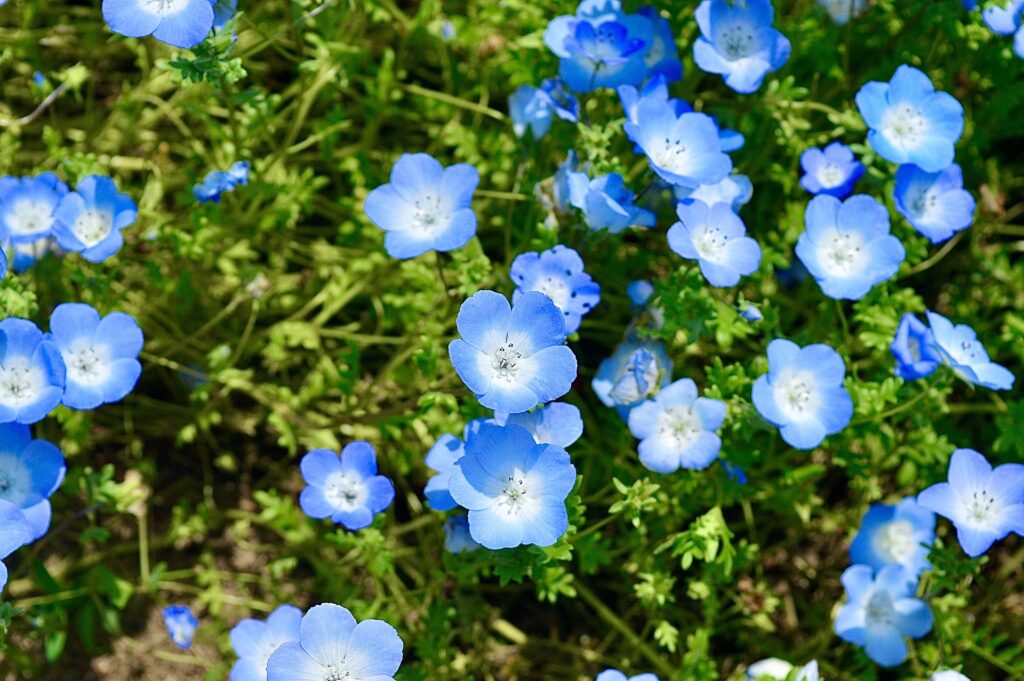
Interestingly, baby blue eyes plants grow in late winter through early summer, which is another reason why they are great for brightening a dark garden. They are most commonly grown in rock gardens or the edge of flower beds.
15. Bleeding Heart (Lamprocapnos)
Part of the poppy family, the bleeding heart flower is a highly valued plant amongst experienced gardeners for its fascinating appearance. On a slightly arched pink stem appears up to 20 pendant flowers, consisting of white inner petals and Fuschia outer petals.

Bleeding heart flowers mostly behave like a spring bloomer, but it’s common for some to remain in bloom throughout summer. While it will grow in full sun in cool and moist areas, it prefers partial shade in warm and dry environments.
16. Siberian Iris (Iris Sibirica)
Also known as the Siberian flag, the Siberian iris is a beautiful way to add a wave of color to a shaded garden in spring. These flowers produce frilly and delicate petals in violet, blue, or white variations, which usually exhibit intricate white lines or white centers.
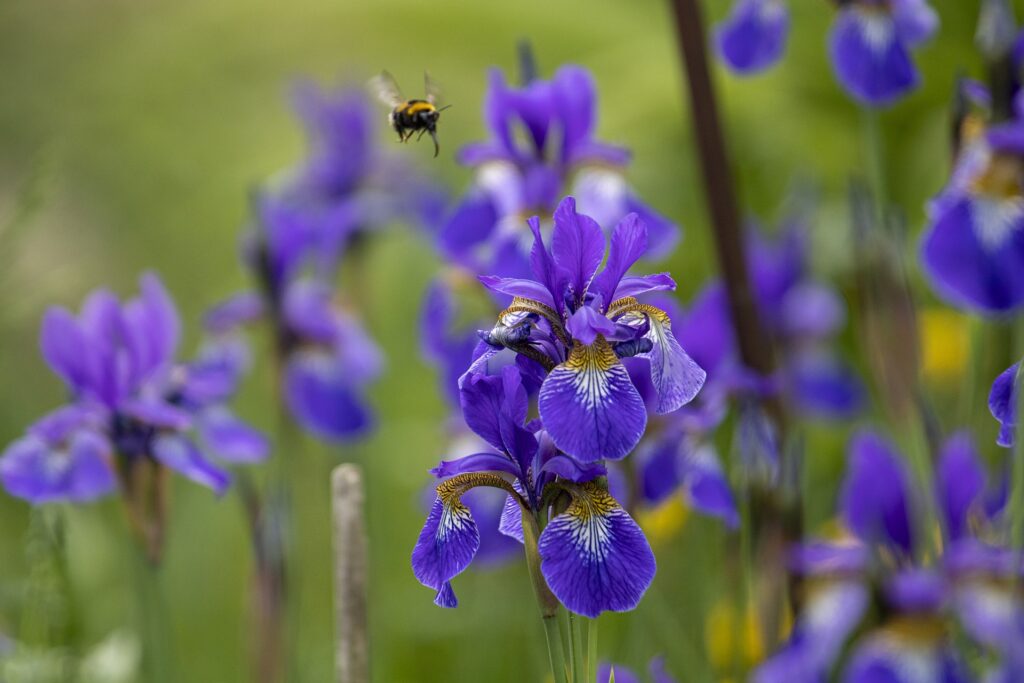
The Siberian iris is native across Europe and will generally happily grow in any soil conditions, and they typically prefer to grow in partial shade to prevent scorching the delicate flowers.
Conclusion
So, there you have it! Just because you have a shaded area of your garden, or if your small garden is permanently in the shade, doesn’t mean you can’t plant an array of stunning flowers. There are lots of shade-tolerant flowers that provide a beautiful burst of color in even the darkest of shadows.
We hope you learned something from this article, here are other articles that you can learn from:
34 Amazing Silver Flowers (Including Pictures)







